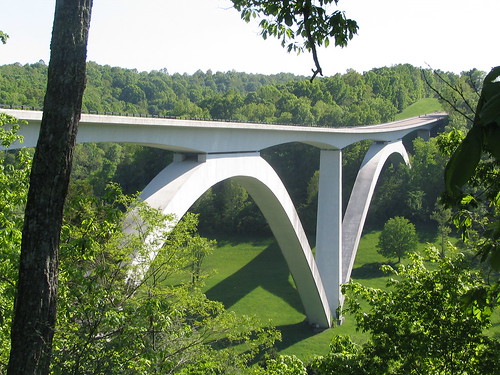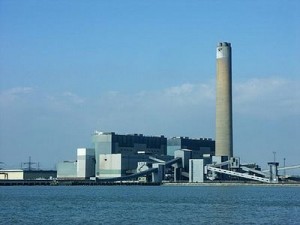
Unless they are receiving unemployment benefits, the stimulus package is not something that will benefit most architects in any direct way. Mostly consisting of spending for non-physical programs, the ≈$94,000,000,000 that is there for infrastructure and construction is not going to any public projects that conventionally get the high-end architecture treatment. Yet if governments and agencies receive grants for utilities or other community assets and approach these structures with an eye to aesthetics, there is the potential for incredible additions to the fabric of our of towns and cities.
If the average architect wants to get design into these buildings, they’re going to have to look to practice architecture differently than they currently do. Firstly, they need to embrace building information modeling. Secondly, they need to emphasize designing details rather than looking at sophisticated conceptual schemes as justifications for form. Thirdly, architects need to look for different opportunities than what they have conventionally seen as prestige architecture projects.
Healthcare and government projects are about the only sectors that hold or grow during recessions, but that shouldn’t be too much of a burden. Design schools constantly challenge students to design power plants, bus stops, and libraries. However, chic design architects have focused on high-end residential or cultural buildings, neglecting low-billing but important projects because their desire to innovate and impress makes practical projects less desirable. For their parts, local governments have eschewed good design, fearing that the costs of adding artistry aren’t worth risking an undesirable, over-designed facility. As a result, most utilities have been delivered as crude, functionalist buildings that, at best, leave no impression at all on viewers. If firms actively lobby to design everything they can possibly find, especially the most mundane infrastructure, they may very well . But to design such complicated and critical buildings, architects need to push their own capacity to employ building information modeling to stay on budget and simplify complex operations.
For those unfamiliar with it, building information modeling can seem like a powerful new way of merging the opaque jargon of architecture with the catchy nonsense of businsess via the complexity of computers. But it’s actually pretty straightforward, more natural than the representational drawings which have pretty much defined the role of the architect. From the Analytique to AutoCAD, architectural drafting has not changed considerably, as architects and engineers draw lines to represent something, split them up on multiple drawings, labeled them and hoped they made sense to contractors. 3D modeling, CATIA and other second-generation CAD have considerably improved architectural design process, they are still representations that require external interpretation. Interpretation, careful copying, and coordination among tired and often grumpy parties leads to errors, clashes, and cost increases. Because the building is designed in fragments, it’s enormously difficult to ensure designs work out beyond the aesthetic level.
Using software like Revit or ArchiCAD, an architect instead creates a virtual building. Every element has properties like “material,” “construction,” “weight,” “emissivity,” and “cost,” in addition to pure vector graphic things like geometry, size, and color.

Every part of the building is detailed down to a T in pre-set specifications, so the model can be cut up any way and exported to drawings. Every part of the building has environmental information, so its systems can be tested to see if the plans work well. A contractor can look at a model, do cost estimation in a matter of minutes, and quite literally know how many screws he’ll need.
The primary benefits of BIM are that architects can visualize spatial information, they can test building systems and ascertain that there are no problems, pass all of this information on to contractors, and easily develop prefabricated and mass-produced parts. Moreover, a single person with training can do what was the work of a team of ten with mere drawings. The latter effect means not only that architects can understand how their buildings are actually built; they can focus more time on the detailing and still deliver buildings faster. Secondary effects include the reduction of errors that cost money and time, the rise of a more capable younger generation, and less time writing specification.
But finding new ways for architects to spending all of their time on high-concept design is not really the point here. These are not places for cultural meditation; designs should aim stridently to reverse infrastructure’s perception as dull, ugly, and undesirable. Utility structures are often in lower-class neighborhoods or dilapidated industrial sectors, so it becomes a matter of civic obligation and social justice to produce designs that approach public spaces in a sensitive way. But at the same time, there’s no reason to hide the industrial component when building industrial infrastructure.

Architects should be celebrating the engineering and technical prowess, making the machinery of culture more beautiful as a way of giving hope to a society that sees technology either as a burden or a commodity rather than as a necessary and good thing. Consider especially how many lives water and sewer treatment saves annually, or the number of people saved from blazes by fire trucks powered by internal-combustion engines. The challenge architects face is how to glorify this truly humane technology while avoiding the gadget-like look that has characterized recent revivals of modernist architecture. When the expresssive aim of architecture is more in sync with an iPhone than a power distribution terminal, it is easy to see excess or frivolity in building systems that keep people alive, keep business moving, and otherwise prevent fighting over a conch.
So, designing for function does matter; hiding these buildings behind inappropriate typologies or ornament would betray the intense functions and inherent structural ideas that infrastructure provides. Moreover, they just don’t need to be that pretty. Instead, architects need to approach stimulus construction as an optimization problem: how does one execute a project that is true to the building’s use, fairly attractive, highly functional, and also very affordable. Architects, to make the infrastructure more beautiful should study the basic components and sections of a piece of infrastructure to see, as Louis Kahn would say, what the pipes and the steel want. Adding other elements like educational facilities or some monumental, memorable structure will further distinguish the buildings as architecture rather than mere building. With the most beautiful forms discovered and obsessively refined, heavy industry can make and a friendly approach to the neighborhood the stimulus could afford America a generation of design excellence for the most unjustly ignored elements of the built environment.
Struggling from the lowest architectural billings in a decade, architects are suffering considerably from the downturn. In general, the construction and design industries are retracting from frenetic growth over the past ten years, with thousands of talented designers losing jobs and most others in some kind of constant fear of that disaster. If architecture firms can argue forcibly that they are needed for the critical infrastructure of modern life and back that up with sensible solutions, then they too can hold strong through the recession. Yet designers cannot and should not expect to profiteer or scheme. There is an expectation of efficiency and accountability that has never been seen before, mixed with a level of public scrutiny that will make even the smallest problem snowball into a national scandal bigger than last year’s Stata Center dust-up. Simple, good ideas are what architects need, backed with technology that emphasizes the gritty details of a building as the architect’s product. Decadent statement architecture is over for the next few years and hopefully tempered for good. A new practicality and a new emphasis on functional beauty can be born in this time, if architects fight for it.
1 thought on “Why Design Matters for the Stimulus: Architects”